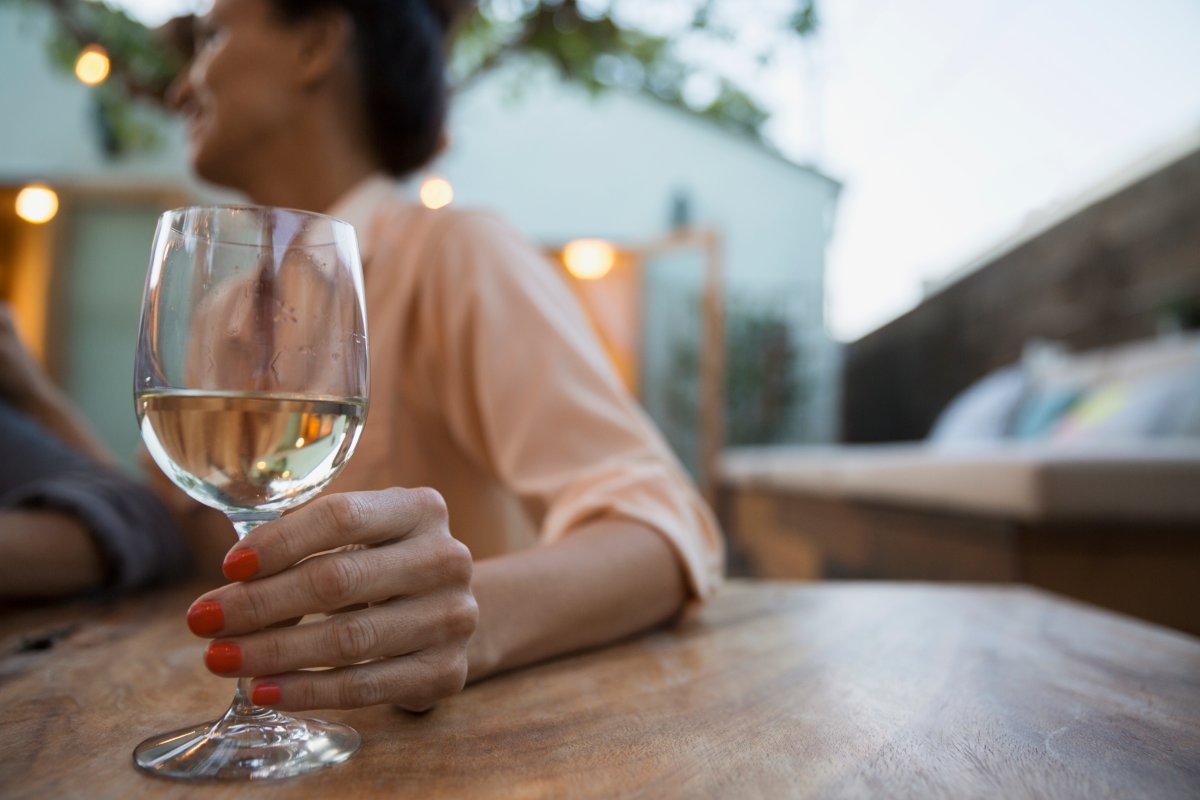You might want to rethink that second glass of chardonnay — or maybe even pass on it altogether.

According to a recent study from Brown University published in the Journal of the American Academy of Dermatology, drinking white wine can increase your risk of developing rosacea.
The chronic skin condition, which mostly targets the face, can cause redness, pimple-like bumps and red lines, the Canadian Dermatology Association (CDA) notes.
READ MORE: Simple alcohol hack saves couple more than $6,000 at their wedding
The study looked at data from almost 83,000 women (who were taking part in another study from 1991 to 2005), and asked them about their alcohol intake during a follow-up period. Researchers concluded there were 4,945 new cases of rosacea over that time period.

- Solar eclipse eye damage: More than 160 cases reported in Ontario, Quebec
- 3 women diagnosed with HIV after ‘vampire facials’ at unlicensed U.S. spa
- ‘Super lice’ are becoming more resistant to chemical shampoos. What to use instead
- Canadian man dies during Texas Ironman event. His widow wants answers as to why
The study also found drinking five or more glasses of liqueur per week, like whiskey or coffee liqueurs, also contributes to a 28 per cent increased risk of developing rosacea.
And although Li and his team aren’t sure what the connection is between white wine and rosacea, in particular, they do believe that consumption of the drink contributes to a weakened immune system and dilated blood vessels. (The study did not examine the effects on men.)
Signs of rosacea
The CDA says experts are unsure what specifically causes rosacea, but it could have something to do with genetics and environmental factors. For instance, fair-skinned people are more likely to develop the condition and chronic sun exposure is a known risk factor.
Common symptoms include redness and blushing around the cheeks, chin and nose, dry skin, and itching or burning on the face.
There are several treatment options depending on the type of rosacea you have (it can range from mild to severe), but ignoring it only makes it worse, the association notes.
White wine and your body
Other studies have shown white wine can also have benefits.
One 2009 report published in the Journal of Agricultural and Food Chemistry found white wine could be just as good as red wine when it came to improving heart function, Best Health magazine reports. However, the study was done exclusively on rats and used a variety of wines.
READ MORE: AMA Travel: Europe walking and wine tours
Another 2015 study tracking 146 subjects found those who drank wine (red or white) and worked out twice a week had improved cholesterol levels, the Washington Post reports.
And a 2014 study from the University of Hohenheim in Germany found white wine could also be effective for weight loss (just don’t over do it).
What alcohol can do to your skin
Dr. Julia Carroll, a dermatologist based in Toronto, says the biggest effect alcohol can have on skin is dehydration.
“Skin will be sallow, lacklustre and deflated. These changes are also compounded by lack of sleep that often goes with a party night or weekend. That is usually a short term effect,” she tells Global News.
READ MORE: Looking at the effects of wine on health
“For people with rosacea they may have a flare causing them to breakout with red papules (bumps) or pustules (whiteheads) on their face. It can be very uncomfortable.”
And although most experts agree that when it comes to alcohol “less is best,” the Centre for Addiction and Mental Health recommends no more than two drinks per day for women, to reduce long-term health risks.
“At the end of the day you are your own ‘liquor control board,’ so know your limits, including how it affects your skin, and stay within them,” Carroll says.





Comments